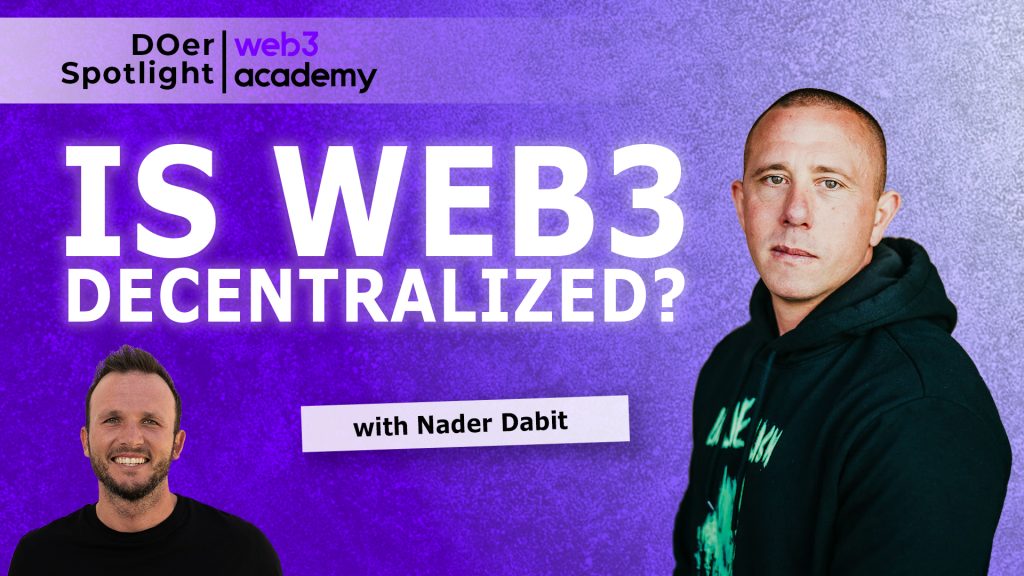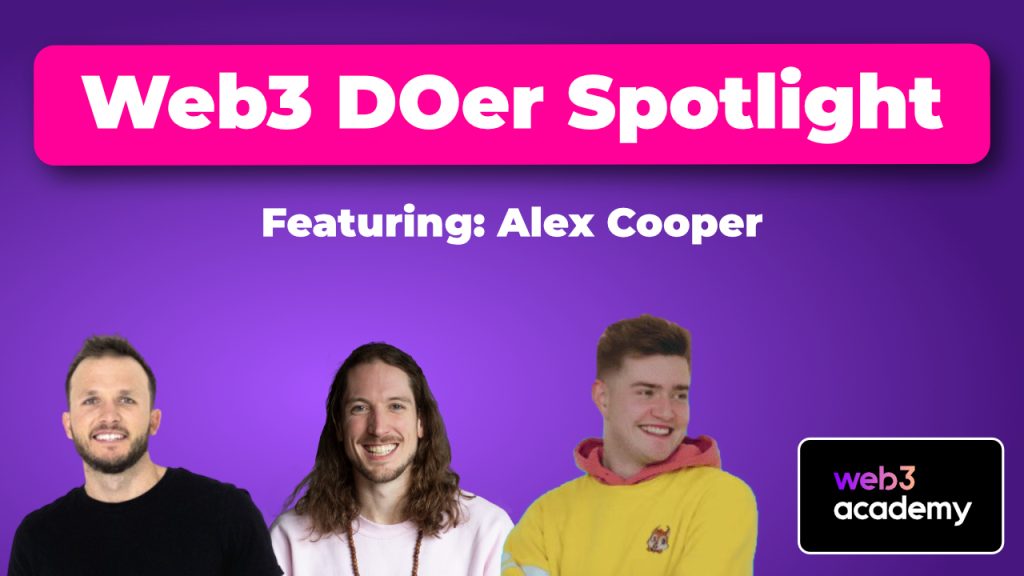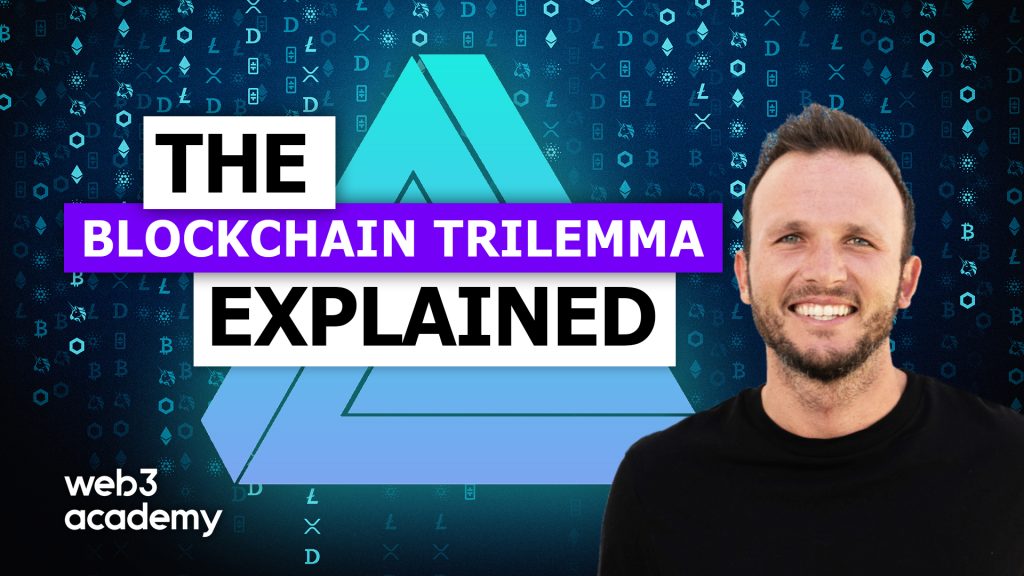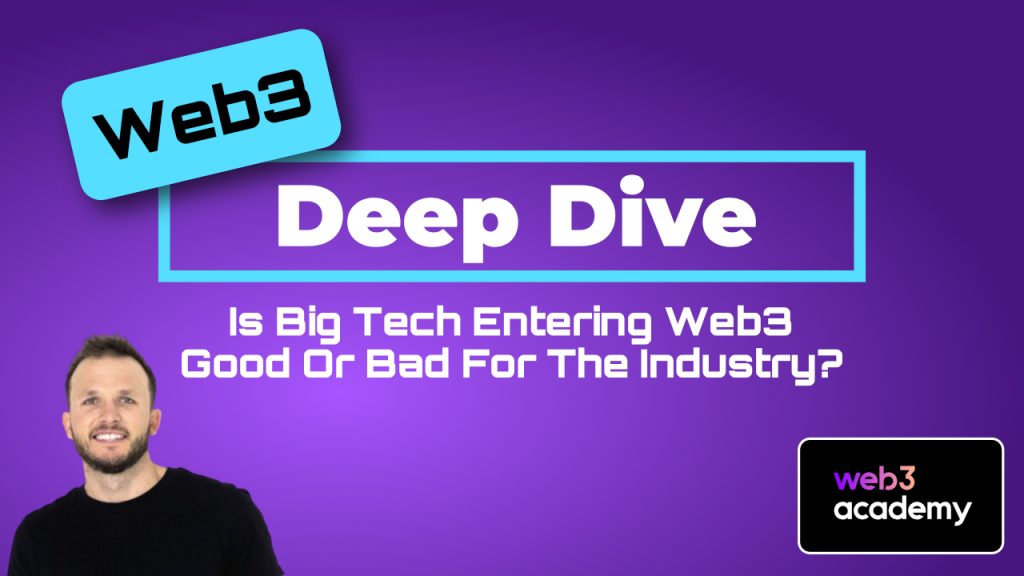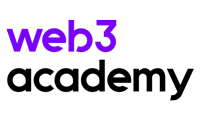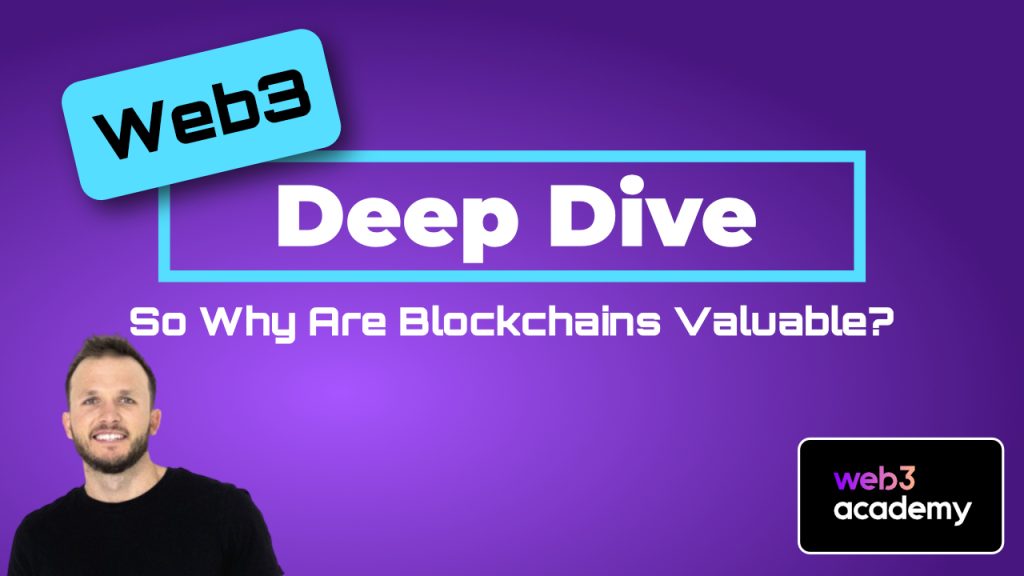
So Why Are Blockchains Valuable?
Dear Web3 Academy DOers!
We’re coming to you with something different today.
It’s tough to remain positive on Web3 during times when Crypto Twitter is dying, fear is extremely present in the markets and the price action of crypto assets stagnates.
To remain bullish, we need to go back to the basics!
This week, Web3 Academy Community member, Mr. Sam Andrew, outlines the value proposition of blockchains.
This entire industry is being built on top of Blockchains. But why? What makes blockchains, and more specifically, block-space so valuable?
Below we explore the 4 features that Blockchains introduce to the internet that are instigating an innovation super cycle.
Later this week we also have Sam Andrew on the podcast to dive deeper into the profitability of blockchains in Web3.
Time to explore the foundational technology that Web3 is being built on. Enjoy!
– Web3 Academy
If you prefer, you can watch the episode below, or listen on your favorite platform: Spotify | Apple Podcast | YouTube
Why are blockchains valuable?
Amid the hype, innovation and enormous wealth creation, this simple yet profound question eluded me. Advocates proselytize that blockchains will disrupt every industry. Blockchains could revolutionize traditional finance, disrupt the art world and create new forms of monetization and record keeping. Potential use cases are seemingly endless.
Instead of assessing that blockchains could be valuable if it does X or when it achieves Y. I propose assessing features of blockchains that are inherently valuable. I posit that blockchains are valuable because of four features:
- Decentralized
- Functional
- Composable
- Native economics
These features make blockchains the most fertile ground for innovation spurring an Innovation Super Cycle. They are present in programmable blockchains, which are the focus of this piece. Their presence varies in degrees across different programmable blockchains. For example, some are more decentralized than others. These features are not all present in Bitcoin, which is not programmable and not the focus of this piece.
1. Decentralized
Blockchains are decentralized because they are not controlled by a central authority. Decentralization is a feature unique to blockchains due to their innovation in incentives and governance.
“Trust-guarantees” foster cooperative networks
Decentralization is valuable because it creates a “trust-guarantee” that no human operated system can. The risk of a business becoming obsolete by a change in operating procedure of a centralized platform a business is reliant on, known as “de-platforming,” is eliminated on a blockchain because no entity can change how the blockchain operates.
A trust-guarantee is valuable to developers because they can build their decentralized applications (dapps) with the guarantee that the blockchain network dapps are built on will not change. The same cannot be said for centralized networks. The likes of Microsoft, Meta, Google, Apple and Amazon have a checkered history changing how their platforms operate to favor themselves at the expense of businesses who built applications on their centralized networks. For example, Microsoft marginalized Netscape with Internet Explorer, Meta marginalized Zynga with its own games, Google marginalized Yelp by introducing its own reviews and Amazon marginalized independent Amazon retailers with Amazon Basic.
Centralized networks have fraught relationships with their constituents. As the chart below, popularized by Chris Dixon, General Partner at a16z, illustrates in the beginning a network rapidly grows by cooperating with developers, creators and businesses to build its network. When the network matures and moves toward the top of the S-curve as its user growth slows, it pivots to extracting value from its users. Cooperation with the network’s complements turns into competition as the centralized network infringes on the complements’ businesses to extract value for itself.
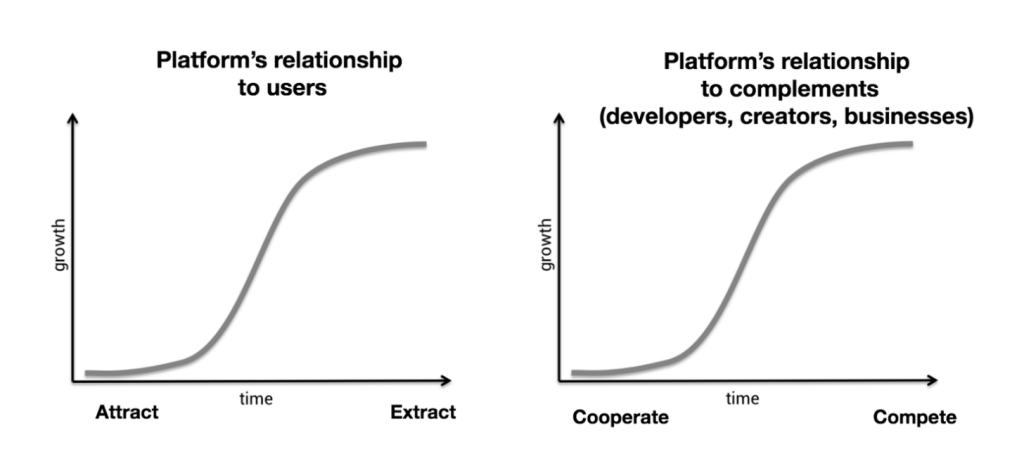
Self-custodied assets create better user experiences
Decentralization enables self-custody of assets. The user directly controls and owns their assets. The owner is not reliant on a third party authority controlling and dictating what they can do with their assets.
Centralized networks are predicated on the assets being controlled and, in some cases, owned by the governing authority. In decentralized networks, your assets truly are your assets and not someone else’s liability. Savings at a bank may be your assets, but they are also the bank’s liability. The bank controls the size, timing, frequency and amount of withdrawals and to whom they can be sent. For example, my Canadian bank did not allow me to send my own money to a crypto exchange and levied heavy fees to wire my money to my US account.
Online content is an asset. The pictures posted, tweets tweeted, essays written and followers cultivated are digital assets that are created by content producers but owned by centralized networks. Meta owns all the content across its platforms. Google owns users’ search history. Twitter owns all the tweets. The business model of centralized networks is based on users creating and publishing content for free, while the network monetizes the value created by its users.
Decentralized networks are valuable because users retain ownership and custody of their assets and are not beholden to third party authorities dictating terms of use and monetization. For example, users can exchange their assets however they want and if they leave a platform, they can take their assets them; including pictures, posts, tweets, blue verified check marks, and followers. In centralized networks, users are the product. In decentralized networks the user is the owner; paving the way for a better user experience.
2. Functional
Blockchains provide unparalleled functionality to build applications on because they are programmable, immutable, transparent and permissionless.
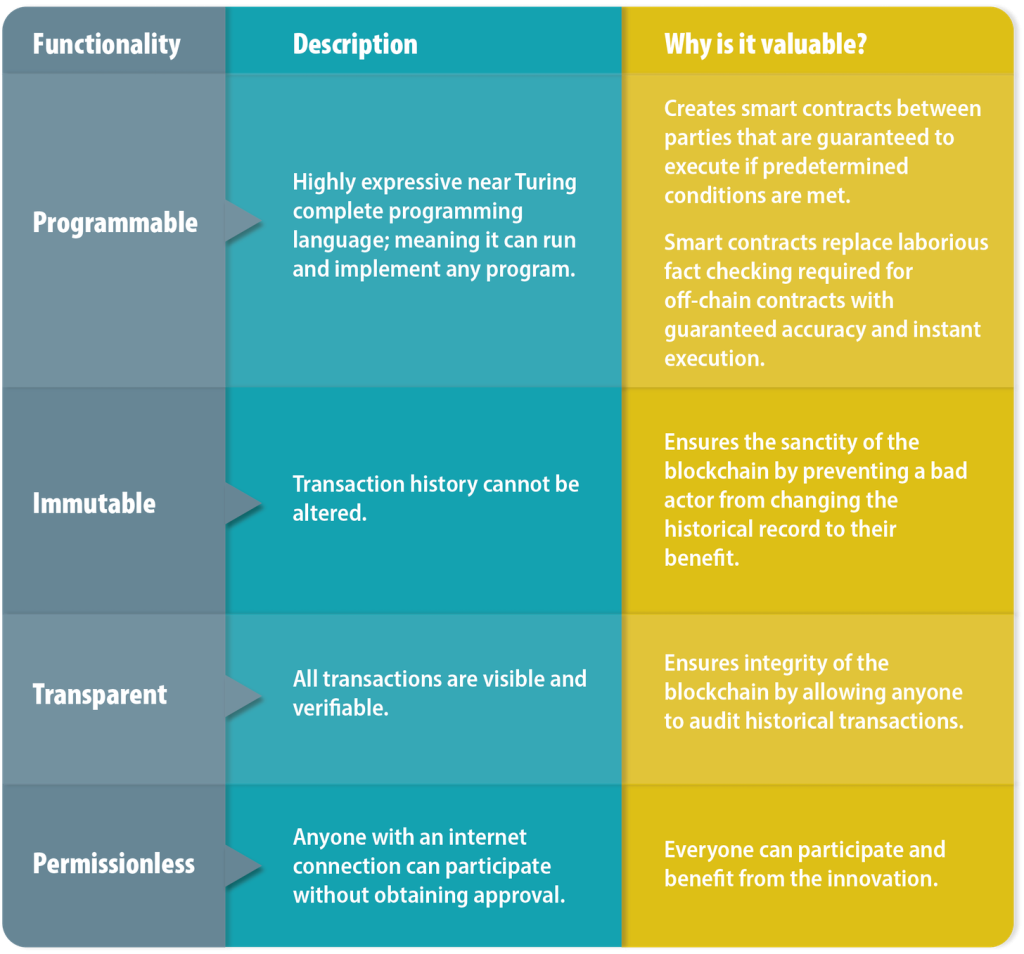
Combined, this functionality provides more latitude for developers to build applications than centralized networks.
3. Composable
Composability = building blocks
Blockchains are composable meaning each component can be recombined into another. The output of one can be the input of another. They talk to one another and leverage each other’s code, and each other’s utility.
“A platform is composable if its existing resources can be used as building blocks and programmed into higher order applications” – Jesse Walden, Founder Variant.
Composability is valuable
Composable blockchains are like lego blocks, each piece can be combined with any other piece to build. This is a new valuable way of building because:
- Open source: Composable blockchains are open source. Everyone must be able to see what the code is in order to develop new code that interacts with it. Open source composability unlocks what has been locked behind firewalls of banks and big tech companies.
- Efficient development: Composability fosters efficient development because problems are only solved once. Non-composable centralized networks are inefficient because engineering talent repeatedly solves the same problems. Open source composable blockchains allow developers to use what is already built as a building block for something new.

- Accelerates innovation: Composability channels talent to new product development accelerating innovation. Composability allows anyone to take existing programs and build on top of them, unlocking previously unimaginable use cases.
- Promotes a cooperative mindset: Centralized networks enforce intellectual property law, sue one another and lobby for favorable regulation to preserve their competitive advantage; their “walled garden.” Composable blockchains, where the code is public, promote cooperation because it’s inevitable that their code is leveraged to build higher order applications. The higher order applications are beneficial to the network it’s built on because they create new use cases propelling additional demand for the network.
4. Native economics
Blockchains issue tokens to incentivize behavior, facilitate governance and enable contributors to capture potential economic upside from creating a valuable network. The creation of digitally native assets, in the form of tokens, is valuable because, for the first time in history, economic value can be seamlessly created, stored and transferred online.
Creating, storing and transferring economic value online is valuable because it pioneers the Ownership Economy. An internet native economy where users own the value they participated in creating. It allows creators an unparalleled ability to independently control and monetize their creations. It allows assets to be transferred globally nearly instantaneously at low cost. It is advancing entirely new digital economies. Artists and gamers are examples of new economic activity powered by native tokens.
Dapps, like Audius, provide new monetization avenues for disenfranchised musicians. There are 2.6 million active musicians (defined by uploading more than 10 songs) on Spotify yet only 16,500 (0.6%) earn more than $50,000 per year due to high take rates. The appeal of Audius to musicians is that they get 90% of music revenue, own their catalog and determine how they want to monetize their content. AUDIO, Audius’ native token, is used to ensure security of the network by rewarding validators. Artists are rewarded in AUDIO and users use AUDIO to gain access to gated content. Audius is owned and operated by its artists, listeners and network validators. It is governed through ownership stakes in AUDIO.
Blockchain video games, like Axie Infinity, are pioneering play-to-earn gaming models. Gamers buy or rent Axie NFTs to join the game. Axie’s native tokens are used for staking, governance and payment. Gamers can earn tokens by playing the game and spend them in game to create new characters. Through exchanges tokens can be exchanged for other digital assets and fiat currencies. Axie Infinity is not available on mobile app stores and has a painfully complicated process to acquire Axie NFTs to start playing, yet it has 1.5 million daily active users, albeit down from a peak approaching 3 million in November. It generated $4 billion of NFT volumes as of March of 2022.
At this stage, whether or not Audius, Axie Infinity and other dapp tokens increase in value is not critical. They are examples of how blockchain powered tokens can create, store and transfer value natively online ushering in entirely new digitally native economies. In 1997, eBay sold $500 million worth of beanie babies. The $5 plush toys soared to thousands of dollars in price and then crashed. Beanie babies were overhyped fads, like many before, and perhaps like NFTs today, but they served a purpose. The beanie baby market mania helped build eBay and ultimately online commerce. In its 1998 IPO Prospectus, eBay noted a softening in the beanie baby market as a risk factor. NFTs, like beanie babies to eBay, are bringing millions of people to a new network; that is what is critical, not the price of a JPEG.
Innovation Super Cycle
It’s impossible to envision the ways blockchains can innovate. When a clunky phone with no keyboard, GPS functionality and a camera was introduced in 2008, users didn’t know what to do with it. Calls dropped. Typing without a keyboard didn’t work well. The battery lasted a few hours. The internet connection was poor. But as the connection and functionality improved, free global communication apps like WhatsApp were developed. The camera was used to share photos on Instagram. Uber leveraged GPS to order cars and food directly. As more apps were developed, the quality of the smartphone improved, which then allowed for even better apps. More developers and entrepreneurs flocked to the budding ecosystem. The innovation cycle fed itself.
A similar cycle is afoot in blockchain, only the decentralized, functional, composable and native economics of programmable blockchain are powering an Innovation Super Cycle.
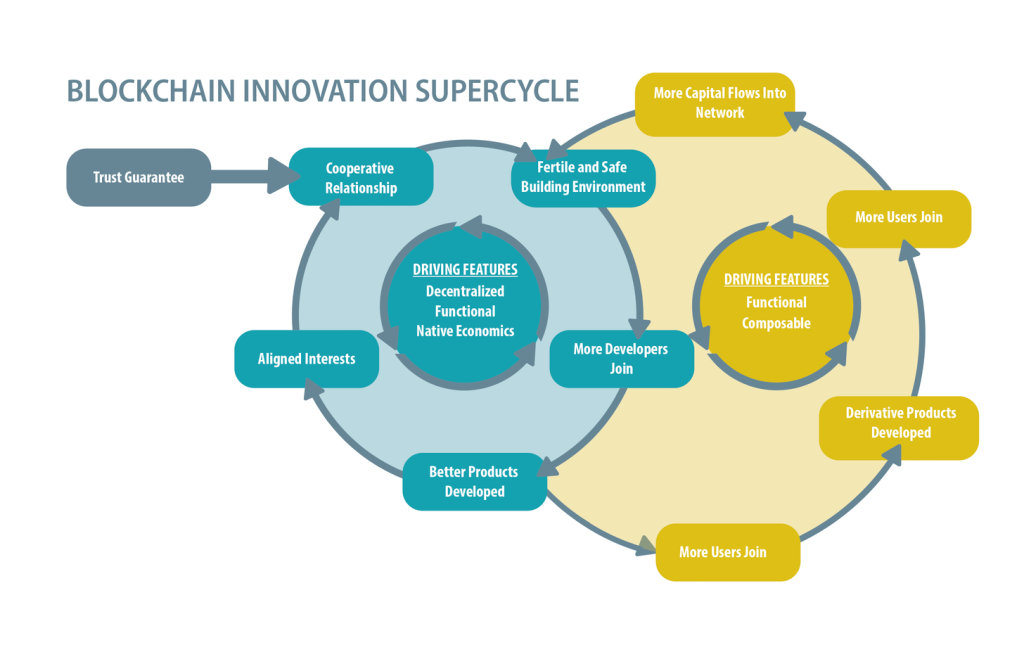
The bedrock of the Innovation Super Cycle is the trust-guarantee ensured by decentralized blockchains. It creates a cooperative relationship between network constituents. The cooperative relationship secures a safe building environment where entrepreneurs need not fear de-platforming. As a result, more developers join the network. The decentralized and functional nature of blockchains leads to more developers joining and building better products. They grow exponentially by adding more developers whereas centralized networks only improve at the rate of which the owner improves them. Native economics enables the creation, storage and transfer of value online seamlessly between network participants. It cements the cooperative relationship. Simultaneously, new users and entrepreneurial developers conceive derivative products, built on top of existing products. Derivative products bring even more users into the network, leading to more capital, making the network an even more fertile development platform. The Innovation Super Cycle feeds itself.
Innovation is booming
Blockchains are a hotbed of innovation attracting billions of dollars of capital and talent. The combined market capitalization of all programmable blockchains is nearly $500 billion. There are 25 programmable blockchain with over $1 billion market cap. Ethereum is by far the largest with a market cap of $330 billion, over 10x the size of the second largest. The combined market cap of all crypto assets is nearly $1.7 trillion.
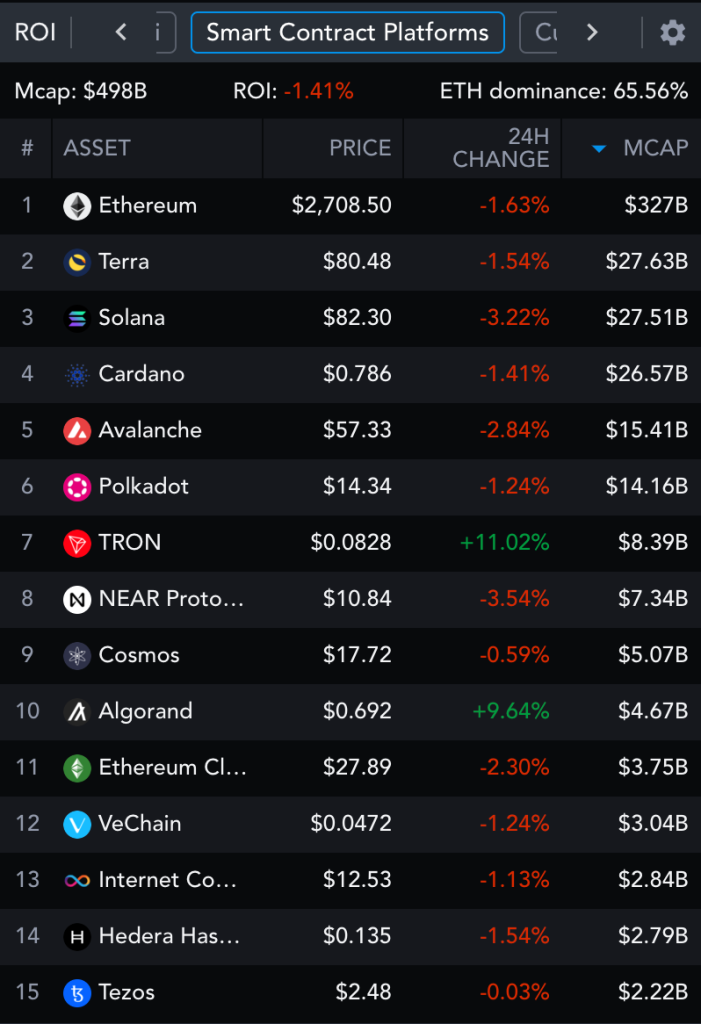
Innovation and capital has ballooned in three main sectors:
- Decentralized Finance (DeFi) – enables a new way to transact globally at scale with near instantaneous settlement and low costs. It also provides access to previously gated capital. Total Value Locked (TVL) measures the total value of all assets held in DeFi smart contracts and is a gauge for the size of the DeFi market. There is $150 billion TVL up from $90 billion in April 2021 and $6 billion in August 2020.

- Nun-Fungible Tokens (NFTs) – allow people to own things online like art, photos, code, music, games and virtual world objects, credentials, governance and access. NFTs provide a novel new form of monetization for content creators. In the last year, there has been $56 billion worth of NFT sales. Sales volumes have declined to ~$0.8 billion per week since their January 2022 peak of $4 billion but up significantly from early 2021 volumes of $5-30 million per week. That majority of NFT sales are digital art. By comparison, the traditional art market did $37 billion in sales in 2021 down from a peak of $50 billion in 2007.
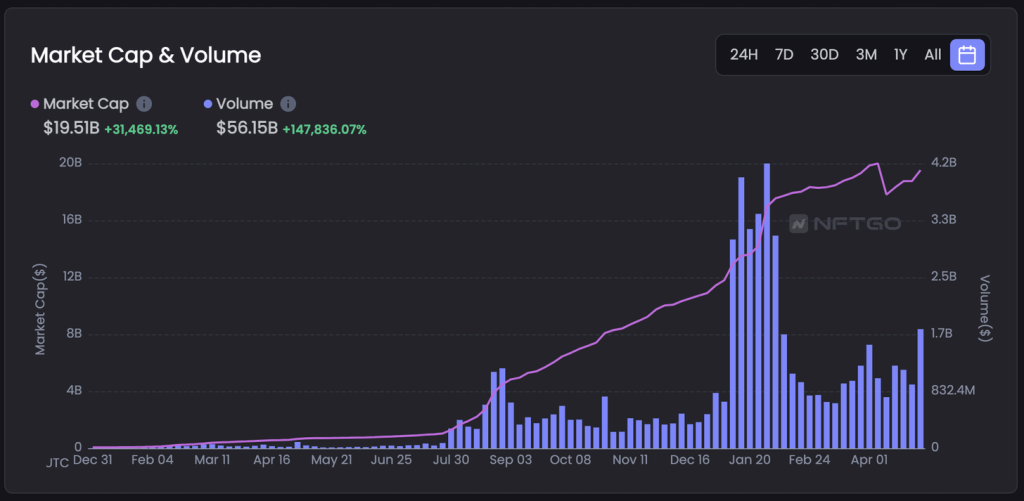
- Decentralized Autonomous Organizations (DAOs) – facilitate new ways of organizing people to collaborate and achieve a shared goal. 2021 saw massive growth in DAOs. Today, the value of all treasure assets on DAOs balance sheets totals $11 billion.

Blockchains are inherently valuable because they are decentralized, functional, composable and have native economics. These unique features make them the most novel and fertile development environments. They will continue to spark innovative products and experiments.
To cement the use case for blockchains security and scalability need to improve…that’ll be a topic for another post.
Sam Andrew
Founder of Sam’s Crypto Musings.
Sam is a reformed hedge fund investor turned crypto researcher, writer and investor.
Want to Join the Web3 Academy Community?
What if I told you there was an exclusive Discord community for entrepreneurs, creators and marketers staying on the forefront of Web3 innovation? Would that be something you’re interested in?
Joining the Web3 Academy Discord is FREE but you need to apply first. This way, we make sure that only DOers are present in our community.
...shoutout to the Web3 DOers already inside, we see you!
Want Your Writing Featured in Web3 Academy?
Interested in publishing your article in Web3 Academy’s newsletter which goes out to a passionate community of Web3 builders, creators, marketers, and entrepreneurs? You can!
We want to share content from our community and get you in front of our broader audience. Here’s our guidelines to submit:
- It must be original work
- It must be related to Web3 and useful for entrepreneurs, creators and/or marketers
- It cannot be shill or promotion


